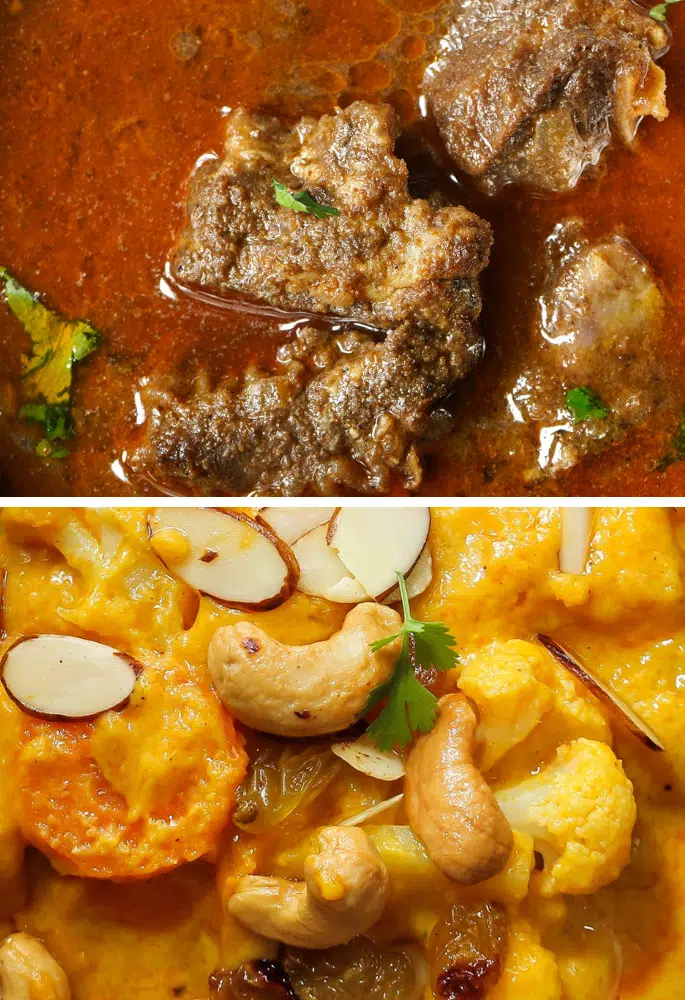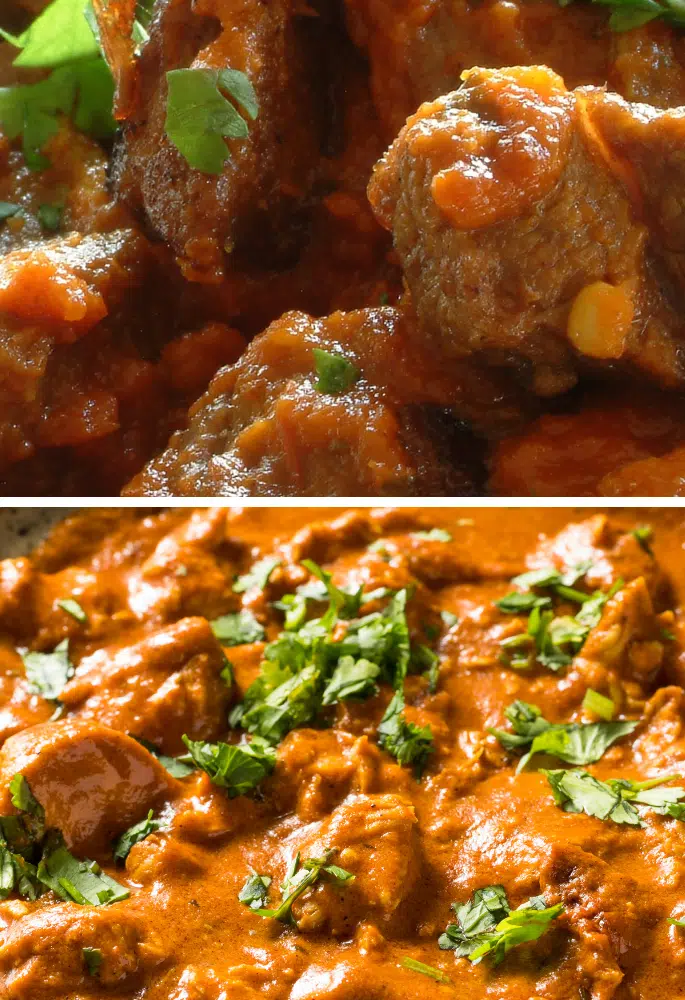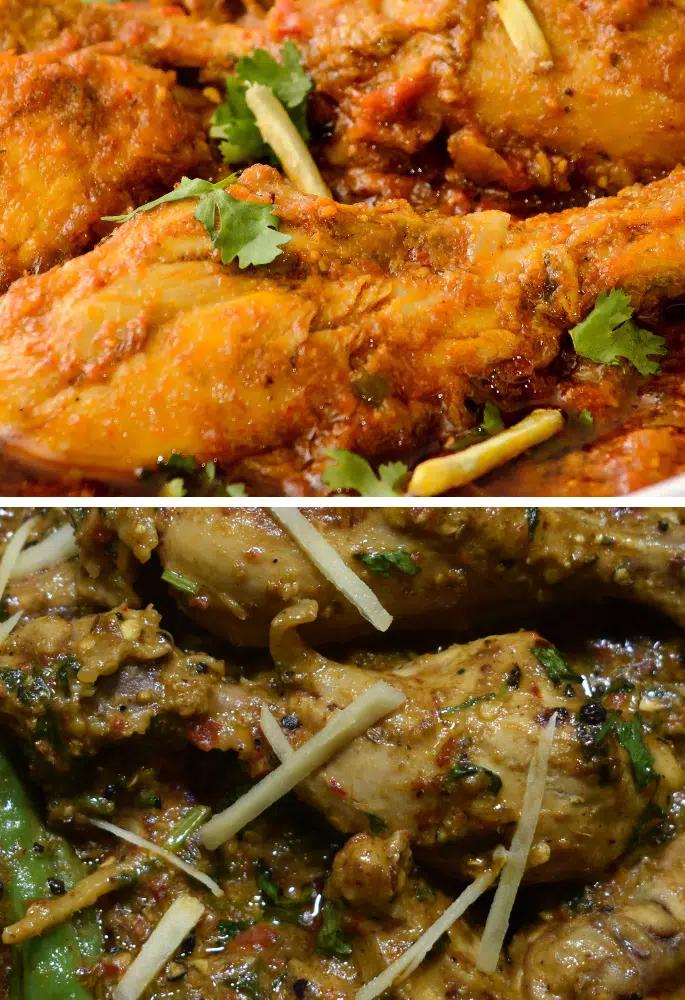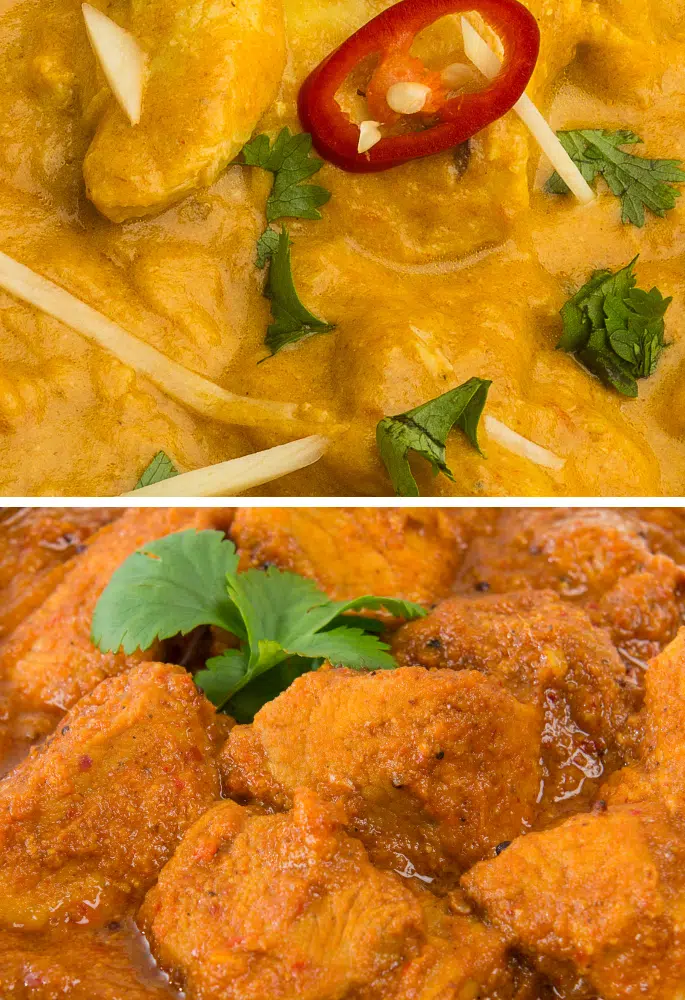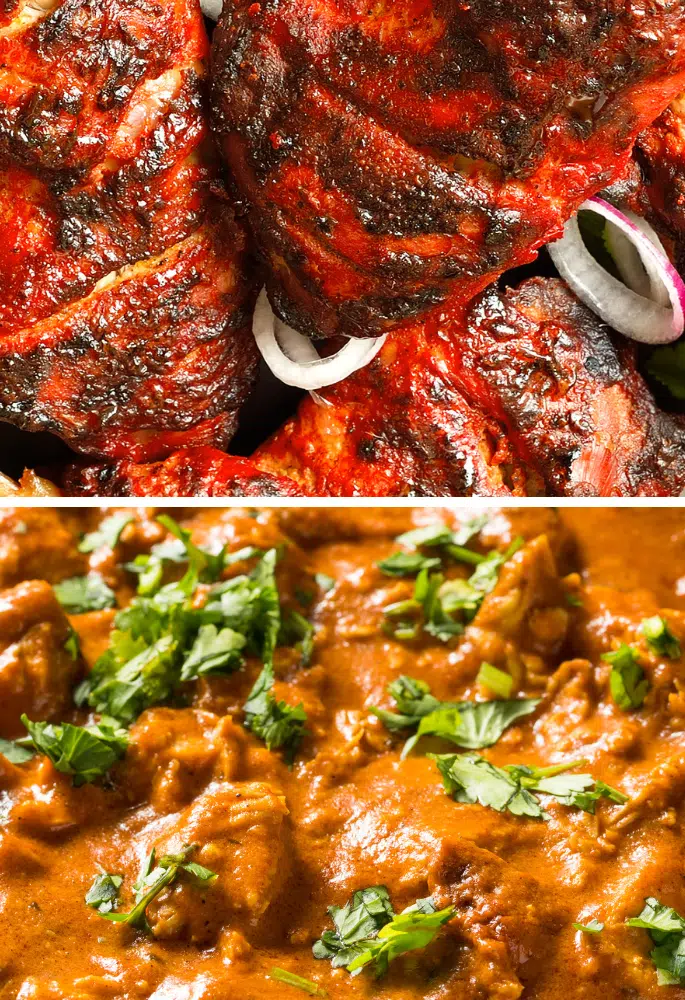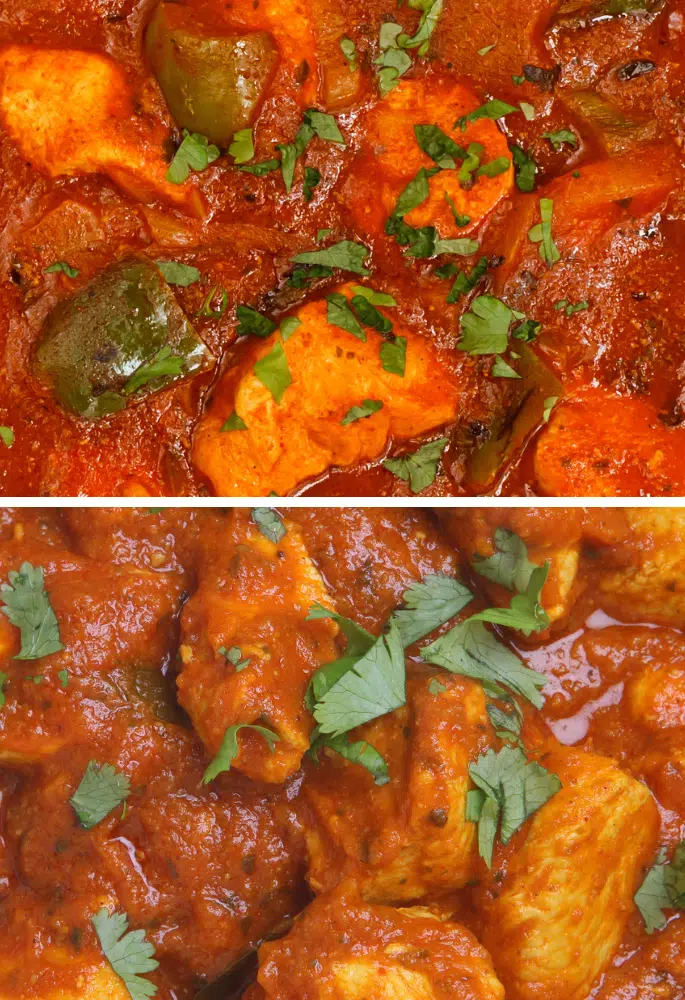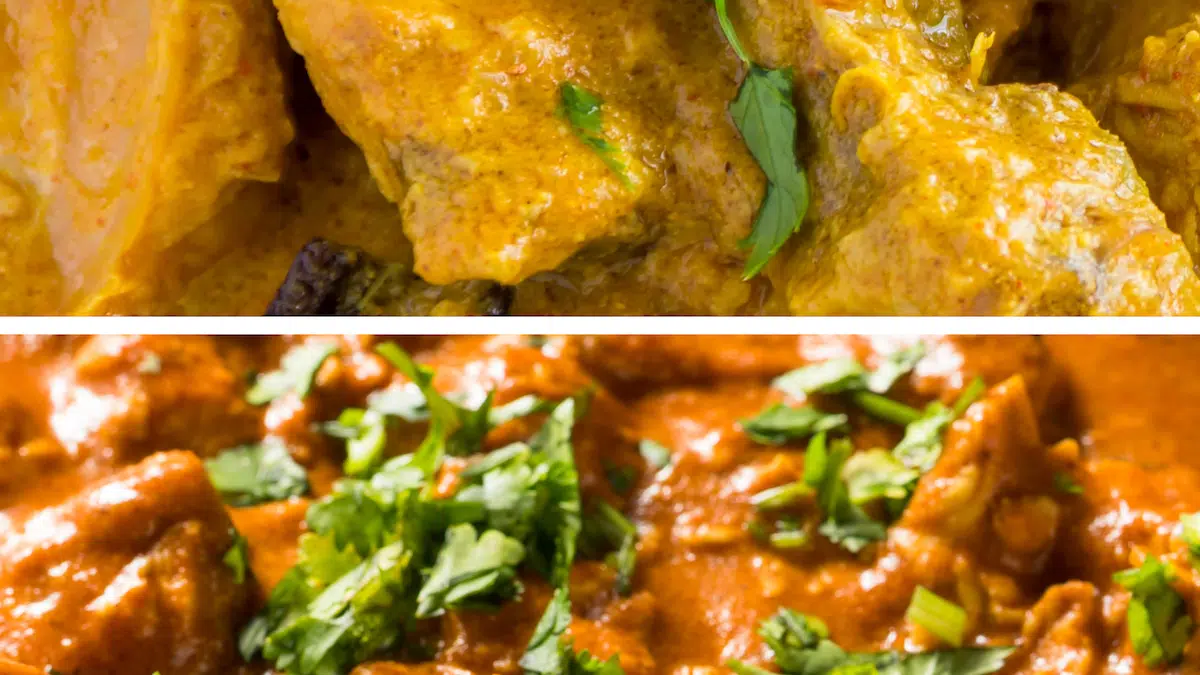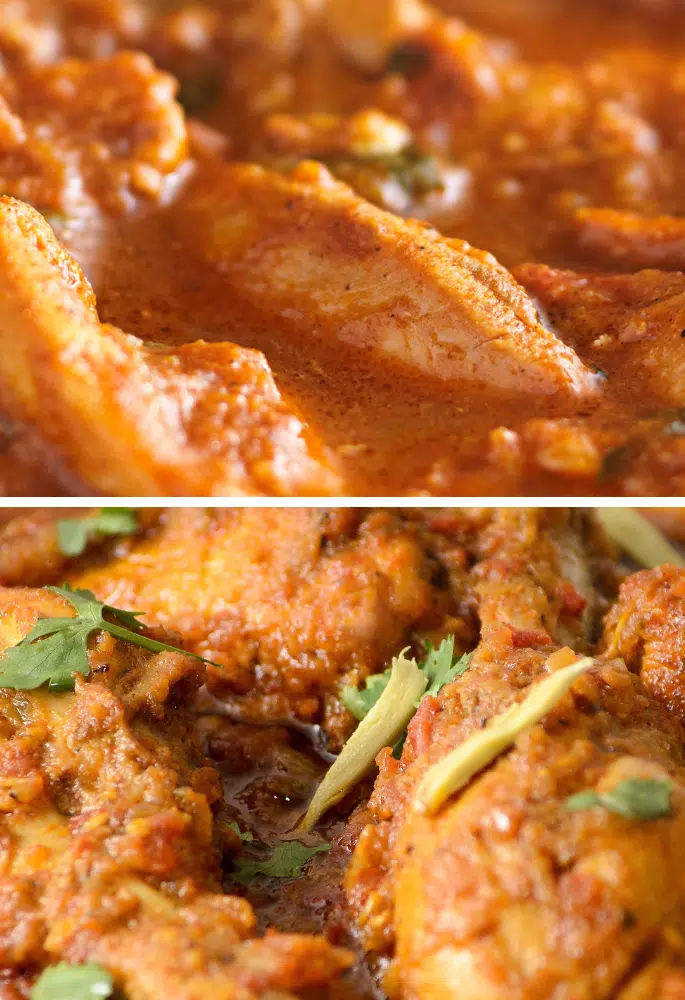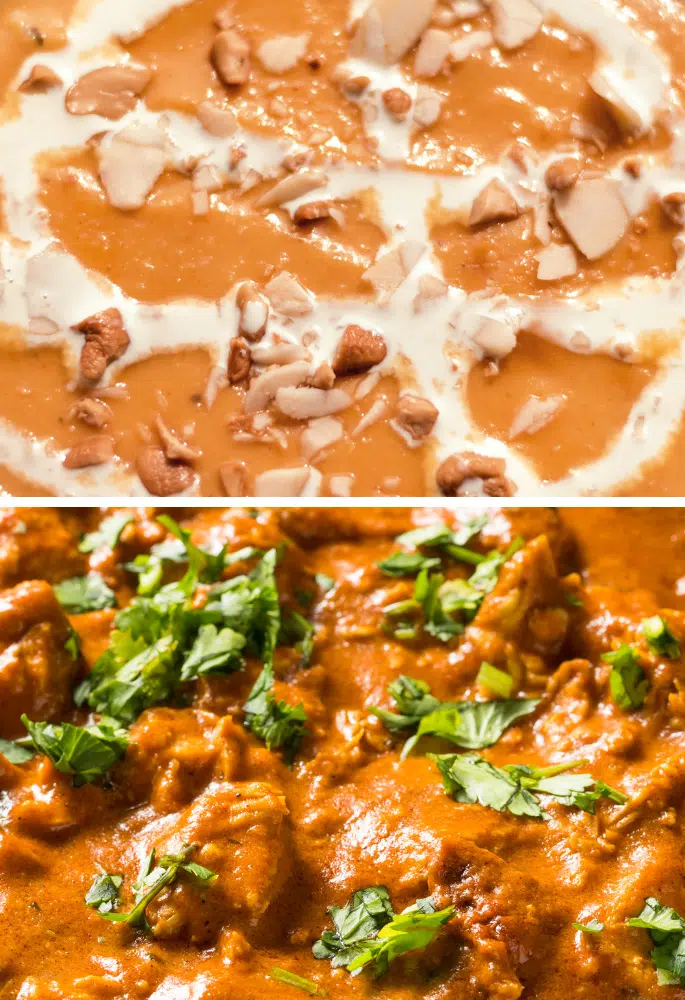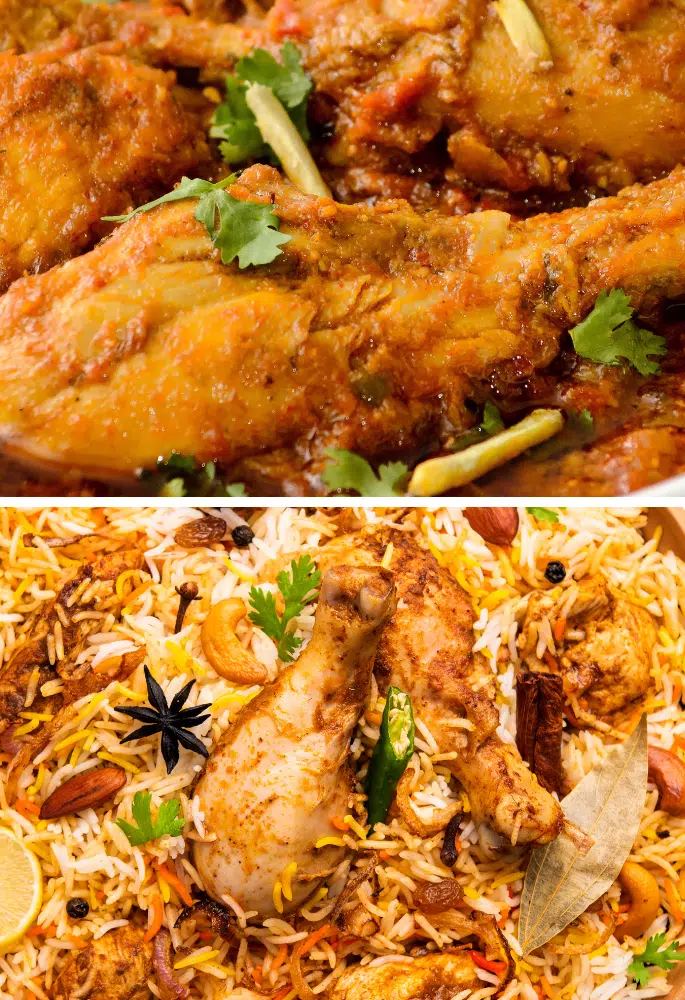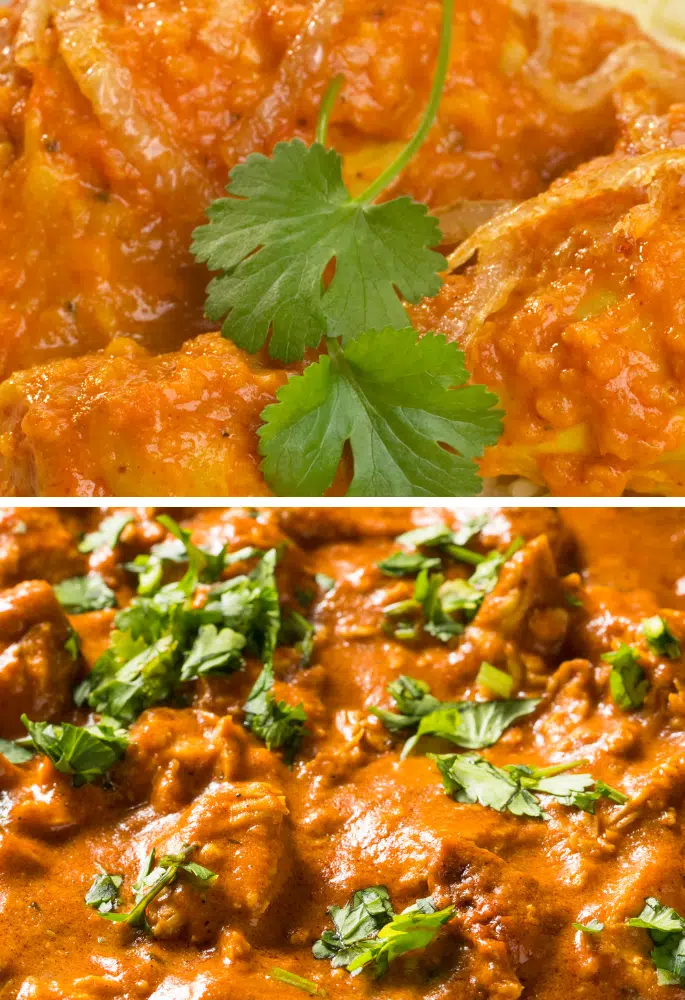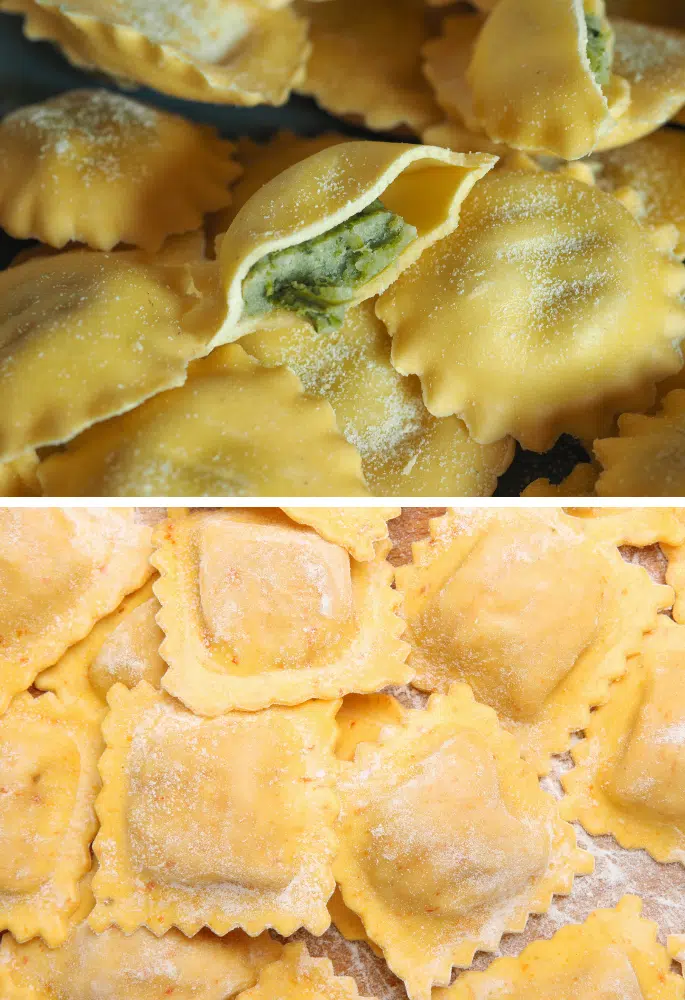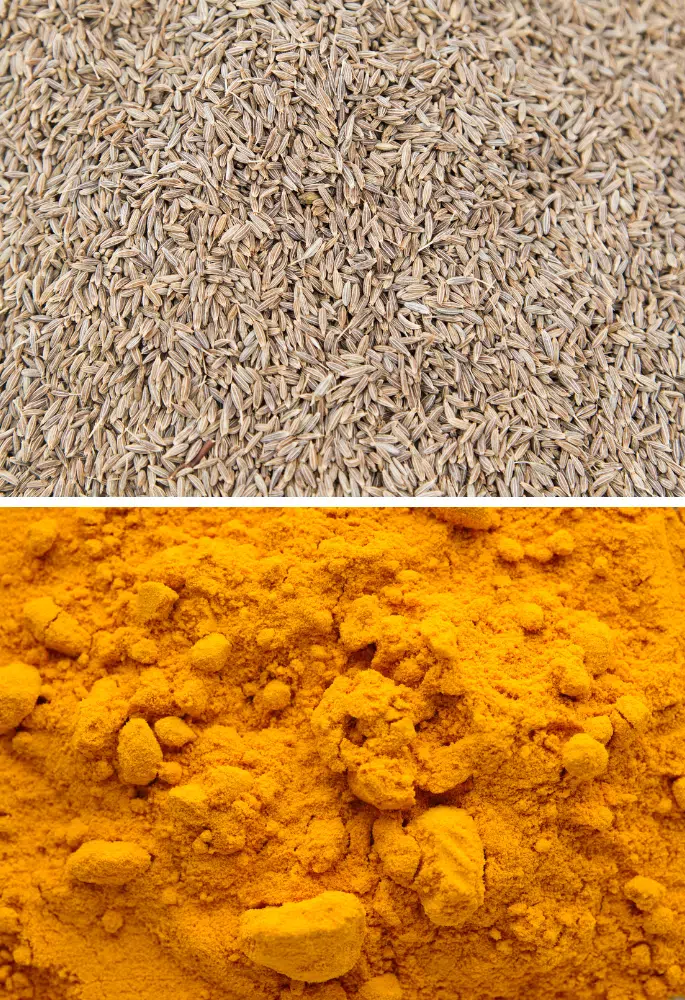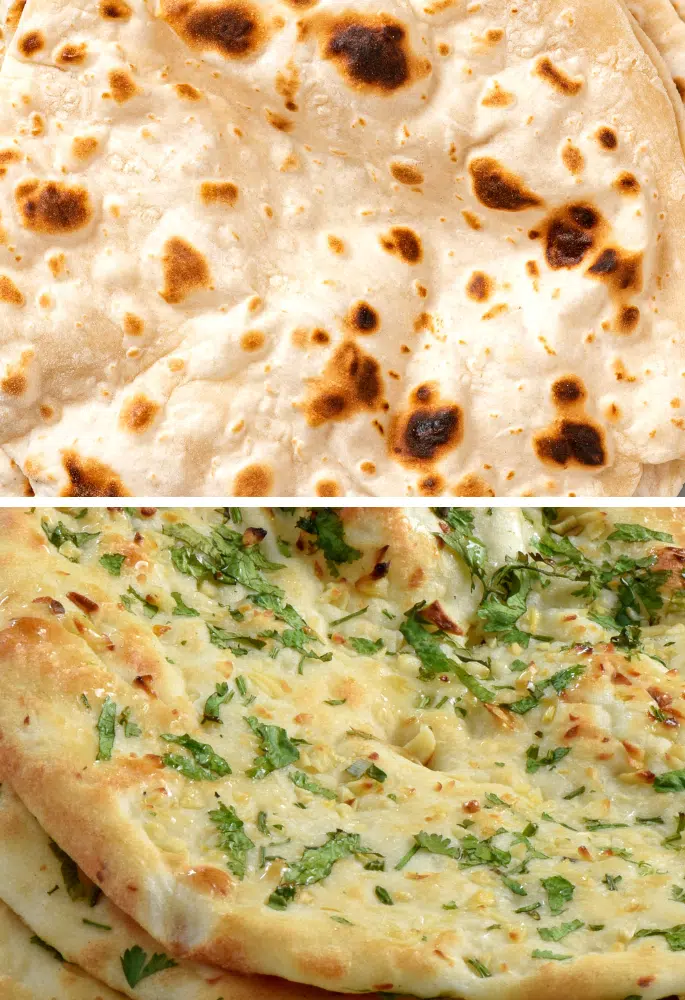Bhuna and masala are two fundamental dishes in South Asian cooking, often featured on menus at your local takeaway. But, how do these two common dishes compare? And are they actually dishes at all? Let’s compare bhuna vs masala:
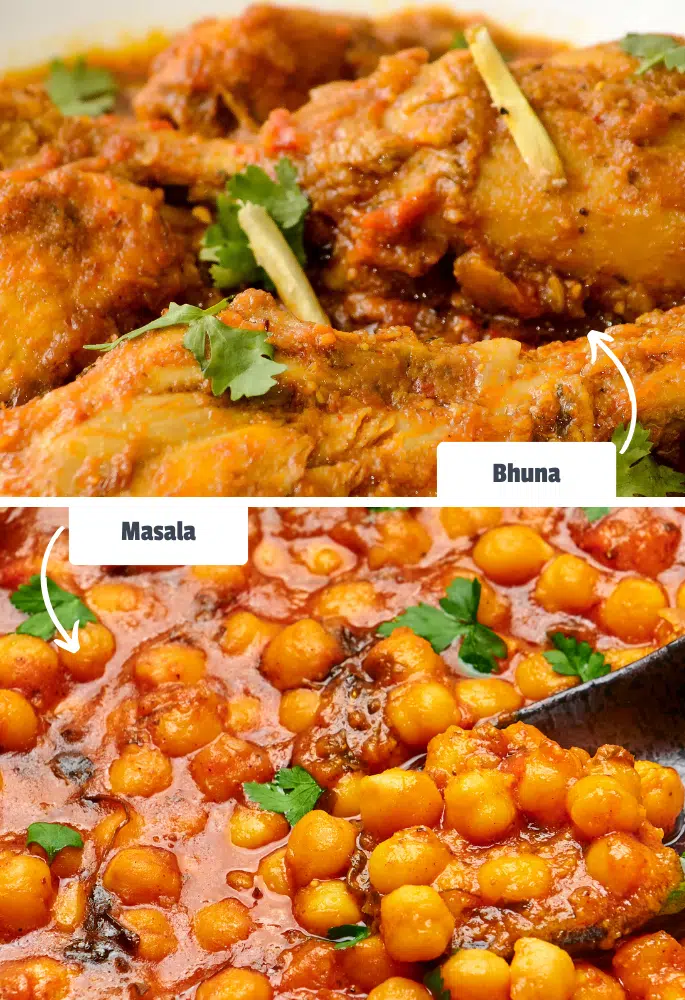
Bhuna is a cooking process where ingredients are fried with spices until they form a thick coating. In contrast, masala is a term for any mixture of spices ground into a paste or powder, used to flavour many dishes within South Asian cuisine, from curries to marinades.
What is Bhuna?
Bhuna is a cooking technique and dish within Indian and Bangladeshi cuisines where meat or vegetables are pan-fried with spices over low heat. The process allows the ingredients to cook in their own juices, concentrating the flavours and resulting in a dish with a thick, richly spiced sauce.
Bhuna dishes typically feature a reduced sauce, where the oil separates from the rest of the ingredients, indicating that the dish is fully cooked and the flavours are well-integrated.
Yes! Most curries are named after the technique used to produce them. Rogan josh, for example, means “oil” or “clarified butter” and “intense heat”.
What is Masala?
Masala refers to a blend of spices that can be either dry or wet, and used as a crucial flavour base in numerous South Asian dishes.
The composition of a masala can vary widely depending on the dish it is meant to flavour, ranging from simple combinations like turmeric and chilli powder to complex mixes that include over a dozen spices.
Common masalas include garam masala, a dry blend used across various dishes, and specific masalas tailored to particular recipes, such as tikka masala or tandoori masala.
“Tikka” refers to pieces of meat marinated in spices and yoghurt, then skewered and grilled. “Masala” refers to the blend of spices used to flavour the chunks. Essentially tikka masala is spiced chunks.
Similarities Between Bhuna and Masala
You might be surprised to hear that there are a few things that make bhuna and masala similar even though they really aren’t alike at all – after all, one is a dish and the other is essentially an ingredient:
- Flavour Importance: Both Bhuna and masalas are pivotal in creating the deep, complex flavours characteristic of South Asian cuisine.
- Culinary Tradition: Each is deeply rooted in the culinary practices of the region, reflecting the history, culture, and regional preferences in their use and preparation.
- Versatility: Both Bhuna and various masalas can be adapted for use with different main ingredients, including meats, vegetables, or legumes.
Differences Between Bhuna and Masala
If you want to know what sets these two apart, here are a handful of differences that show you just how different they truly are:
- Definition and Role: Bhuna is a cooking process and dish type, focusing on the technique of frying spices and ingredients. Masala, however, is a term for spice blends that are integral to flavouring dishes across South Asian cuisine.
- Texture and Consistency: Bhuna dishes are known for their thick sauce and concentrated flavours, while masalas contribute to a dish’s overall flavour profile without determining its texture.
- Usage: Bhuna is specific to dishes that require a slow-cooking process to intensify flavours, whereas masalas are versatile and used in various dishes, including curries, marinades, and grilled foods.
- Preparation: Bhuna involves the actual cooking process of a dish, while preparing a masala can be a preliminary step, involving the grinding or blending of spices before they are used in cooking.
Bhuna vs Masala: Which is the Most Important?
Which do you think is the best between bhuna and masala? It’s not a particularly easy comparison to make – because one is a cooking technique and one is a mix of spices – but which do you think is the most important in South Asian cooking?
Do You Prefer Bhuna or Masala?
Hailing from Liverpool, Oliver is an adventurous chef with a penchant for exploring diverse cuisines and novel ingredients. Ollie, combining his love for local British flavours with global influences, brings innovation and charm to home cooking.


